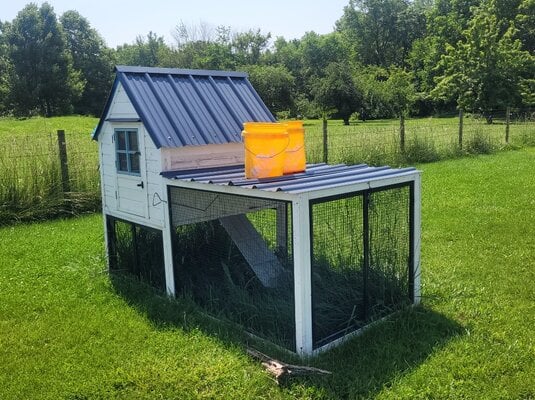I would only let one broody "set".
Get/borrow/use the largest all wire dog crate you can find and tuck it under the poop board in the corner of the coop. Bed it down with a thick fluffy layer of bedding, make a well to form a nest positioned in the corner of the crate nearest the walls and put a handful of fake eggs in it. Toss an old towel over it to block off the top and one side (the one without the door). Toss your chosen mother out for a broody break and when she comes back into the coop to go back to her nest box, grab her out of the box and put her in the crate. This will be the maternity ward to which you will graft her.
Lock the second hen in a broody breaker and break her broodiness.
Every day, go out and remove the mother hen from the crate and toss her out for a broody break. Stay and do your chores and monitor her. When she comes back in the coop, guide her to the crate. Don't grab her and place her in there. Let her go in on her own, then close her in again. Repeat this daily until she willingly goes into the ward on her own.
At this point you can give her hatching eggs or you can wait 2+ weeks for her to 'set' the fake eggs before trying to graft hatched chicks to her. The problem with grafting chicks is twofold. The mother has to have set for approximately the amount of time it takes to hatch an egg before you attempt the grafting and it is hard to find chicks 3 days old or less on her "hatch" day. And they won't always accept the chicks.
The drawback of hatching eggs is you then have to deal with the cockerels you get from the hatch.
I wrote an article on broody hen management that you can read
here for more details about how I manage them.
 we have two 1 year old hens that have gone broody (no Rooster) and I'm considering getting some baby chicks to put with them. I just dont think our current set up is condusive. What do you think? I do have a little chicken house with a tiny run area, but it's not within the hardware clothed run and no hardware cloth skirt (though we could add one).
we have two 1 year old hens that have gone broody (no Rooster) and I'm considering getting some baby chicks to put with them. I just dont think our current set up is condusive. What do you think? I do have a little chicken house with a tiny run area, but it's not within the hardware clothed run and no hardware cloth skirt (though we could add one). 












